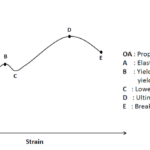What is Stress?
Whenever an external force is applied on a body then a resisting force is induced in the body. This resisting force acting per unit area of the body is called stress. Under equilibrium condition this resisting force is equal to the applied load. So the stress is also defined as the ratio of applied force to the cross sectional area on which this external force is applied. The force applied on the body is called load.
For better understanding about the stress let’s take an example
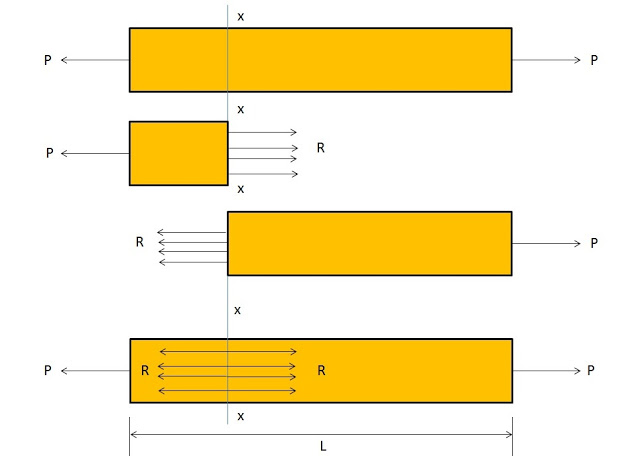
Considered a bar of length L, cross section area A and an external force (load) P is applied on the body. Take a section x-x of the bar as shown in the figure. The load at the left of the section induces resisting force R at the right of the bar. And the load at the right of the section x-x as shown in figure above induces a resisting force R at the left of the section. Under equilibrium condition the resisting force remains equal with the applied load. The ratio of resisting force to the cross section area called stress.
stress=(resisting force)/(cross sectional area) = R/A
What is strain?
When an external force is applied on the body then some change in dimension of the body takes place. The ratio of this change in the dimension of the body to the original dimension is called strain.
- Strain is a dimensional less quantity as it is the ratio of change in dimension to the original dimension.
- The strain is denoted by the letter ‘e’.
Strain = change in dimension/ original dimension
For example: Considered again a bar of length L, and an external load P in the form of pull is applied on it. Due to this load there is some change in the length of the body. The length of the body increases by the amount dl. The ratio of this change in length (dL) to the original length (L) is called strain.
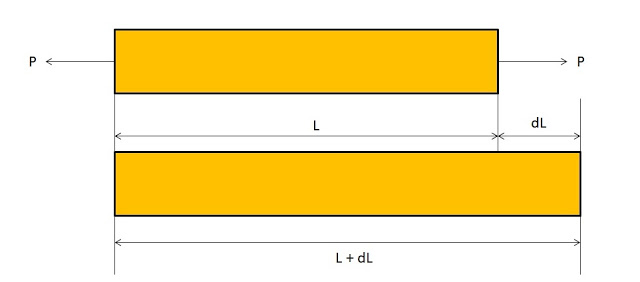
Strain = change in length/ original length
e = dL/L
Types of Strain
The various types of strain are as follows
1. Tensile strain:
When an external load is applied on the body and there is increase in the length of the body. Then the ratio of increase in the length of the body to original length is called tensile strain. Tensile strain is always results in increase in length.

Tensile strain = increase in length/ original length
2. Compressive strain:
The ratio of decrease in length of the body to the original length is called compressive strain. The compressive strain is always results in decrease in length of the body.
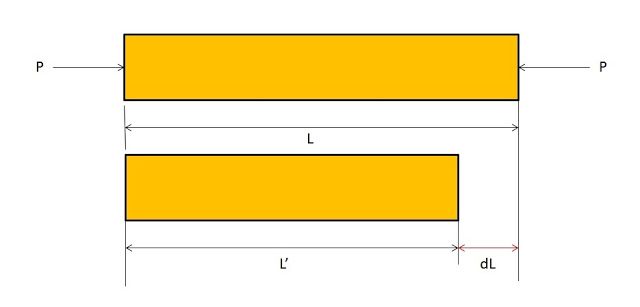
Compressive strain = decrease in length/ original length
3. Volumetric strain:
The ratio of change in volume to the original volume is called volumetric strain.
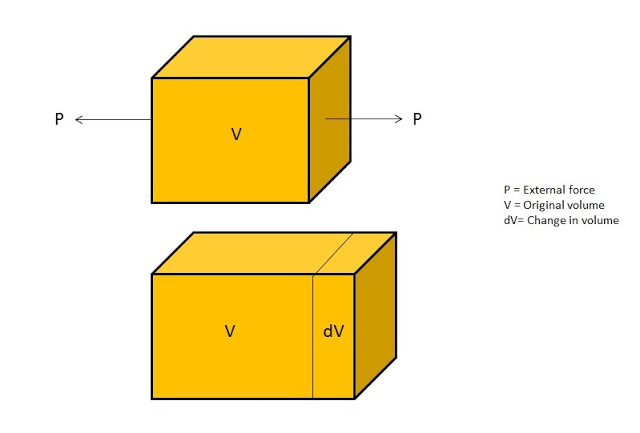
Volumetric strain = change in volume/ original volume
4. Shear strain:
The strain that is produced in the body due to shear stress is called shear strain.
Types of stress
The various types of stress are:
1. Normal stress:
The stress that acts in the direction perpendicular to the area is called normal stress.
The normal stress is again of two types and these are
(i). Tensile stress: when a body is subjected to two equal and opposite pulls then the stress induced in the body is tensile stress. The tensile stress results in the increase in the length of the body.
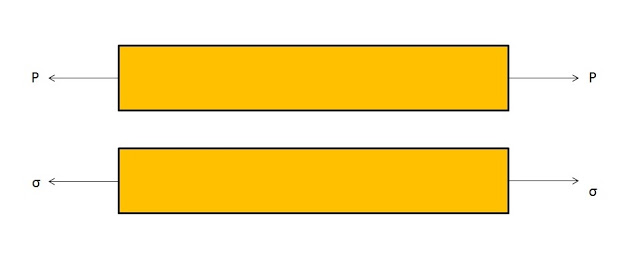
(ii). Compressive stress: The stress induced in a body when it is subjected to equal and opposite pushes is called compressive stress.

- The compressive stress is always results in the decrease in the length of the body.
- The compressive stress acts normal to the area and pushes on the area.
2. Shear stress:
The stress induced in a body, when subjected to two equal and opposite forces which are acting tangentially across the resisting section as a result of which the body tends to shear off across the section, is called shear stress.
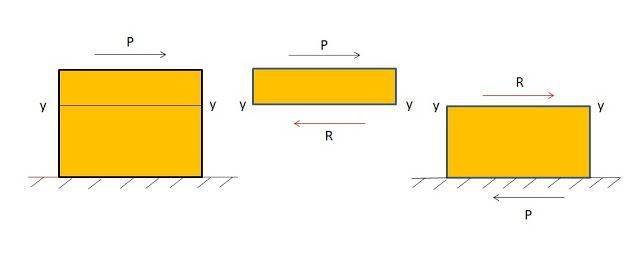
- The strain produced in a body due to shear stress is called shear strain.
- The shear stress acts tangential to the area.
- It is denoted by τ.
let’s check your grasp on stress and strain
- The ratio load applied load to the cross section area is called
(i). Stress
(ii). Strain
(iii). Shear stress
(iv). Density
- The ratio of change in dimension to the original dimension is called strain.
(i). True
(ii) False
- When a body is applied with two equal and opposite push then the stress induced in the body is ………………………..
(i). Tensile stress
(ii). Tensile strain
(iii) Compressive stress
(iv). Non of these
- The tensile strain is the ratio of
(i). The decrease in length to the original length
(ii). Increase in length to the original length
(iii). Increase in volume to the original volume
(iv). None of these
- Shear stress acts …………………… to the area.
(i). Normal
(ii). Tangential
(iii). Inclined
(iv). None of these
This is all about what is stress and strain? if you find anything missing or incorrect than don’t forget to comment us. And if you find this article informative than likes us on Facebook.




